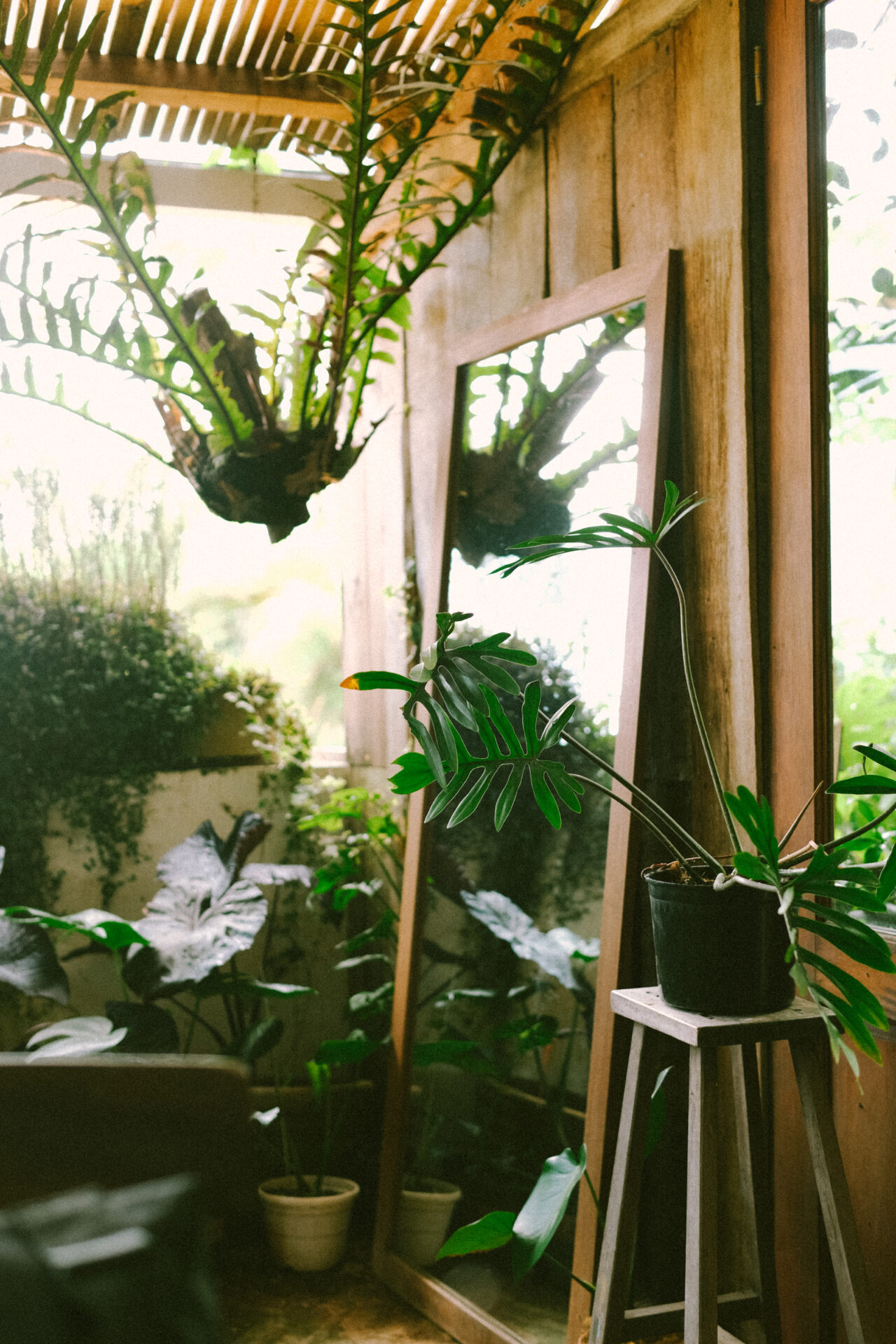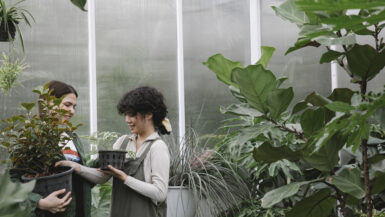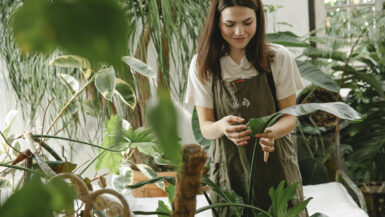Indoor vertical gardening has gained popularity among urban dwellers and gardening enthusiasts thanks to its space-saving and eco-friendly nature. However, as with any form of gardening, these vertical gardens are not immune to pests that can wreak havoc on your precious plants. This article delves into the crucial aspects of indoor vertical garden pest control, arming you with invaluable tips and tricks to protect your green haven.
We will discuss various methods, ranging from natural remedies to more advanced techniques, to ensure your plants remain healthy and thriving, free from harmful pests. So, join us in exploring the world of pest control for indoor vertical gardens and learn how to maintain your garden’s aesthetic appeal and productivity while safeguarding it from these unwelcome intruders.
Monitoring and Maintenance for Pest-Free Growth
Keeping a close eye on your indoor vertical garden and performing routine maintenance is vital in preventing pest infestations. You can maintain a healthy environment that discourages pests from settling in by consistently monitoring your plants and ensuring they receive the appropriate care. This subsection will explore various strategies to maintain a pest-free vertical garden, from early detection to addressing nutrient deficiencies. Let’s dive in and discover how to keep your indoor vertical garden flourishing and pest-free.
Early Detection of Pests and Signs of Infestation
The foundation of successful pest control lies in early detection. Regularly inspect your plants for any signs of pest activity or damage. Look for holes in leaves, yellowing or wilting, sticky residue, or the presence of insects themselves. By identifying and addressing issues early on, you can prevent the problem from escalating and causing severe damage to your plants. Additionally, using sticky traps can help you monitor and catch flying insects, making it easier to gauge the severity of the problem.
Proper Watering and Humidity Management
Overwatering is a common cause of pest infestations in indoor vertical gardens, as excessive moisture creates a favorable environment for pests like fungus gnats and aphids. Ensure you water your plants according to their needs and allow the soil to dry out between waterings. Additionally, use a hygrometer to maintain optimal humidity levels within your indoor garden and adjust your watering practices accordingly.
Pruning and Removing Infested Plant Material
Pruning your plants promotes healthy growth and helps keep pests at bay. Regularly remove dead or damaged leaves, which can attract pests and provide hiding spots. If you find any part of a plant heavily infested with pests, it’s best to remove and dispose of it immediately to prevent it from spreading to other plants.
Addressing Nutrient Deficiencies to Boost Plant Health
A healthy plant is less susceptible to pest damage, so ensuring your plants receive the right nutrients is essential. Proper nutrient management is critical to indoor vertical gardening, as it directly affects plant health and resilience. Ensure your plants have the necessary nutrients in the correct proportions, and monitor them for any signs of nutrient deficiency.
To sum up, consistent monitoring and maintenance are essential in ensuring a pest-free indoor vertical garden. By detecting and addressing issues early on, maintaining proper watering and humidity levels, pruning your plants, and providing them with the correct nutrients, you can create an environment where your plants can thrive, and pests will find it difficult to establish a foothold. Embrace these practices to enjoy a beautiful, bountiful indoor vertical garden free from the nuisance of pesky invaders.
Safe Chemical Pesticides for Indoor Gardening
While natural remedies and preventative measures are essential in maintaining a healthy indoor vertical garden, there may be times when you need to resort to chemical pesticides to combat persistent pests effectively. In this subsection, we will discuss some safe and effective chemical pesticides that can be used in indoor vertical gardens without posing a risk to your health or the environment. From organic and eco-friendly options to carefully selecting and applying chemical pesticides, we will guide you through ensuring that your plants remain pest-free while minimizing any adverse effects on you or the environment.
Organic and Eco-Friendly Pesticide Options
When choosing chemical pesticides for your indoor vertical garden, it’s advisable to opt for organic and eco-friendly alternatives that are less harmful to humans and the environment. Products containing neem oil, insecticidal soap, or pyrethrins derived from chrysanthemum flowers are excellent choices, as they can effectively control pests while remaining safe for use in indoor settings. These pesticides disrupt pests’ life cycle or nervous system, enabling you to protect your plants without compromising your health.
Selecting the Right Pesticide for the Job
Before applying any chemical pesticide, it’s crucial to identify the specific pests causing problems in your garden. Using the wrong product may not only be ineffective but could also harm beneficial insects or your plants. Consult online resources, gardening forums, or your local nursery for guidance in identifying pests and choosing the appropriate pesticide. Once you’ve determined the best course of action, follow the manufacturer’s instructions for application and safety precautions.
Targeted Application and Diligent Monitoring
When using chemical pesticides, targeted application is key to minimizing potential risks. Apply the pesticide only to the affected areas rather than spraying your indoor vertical garden. This approach will help you control the pests while reducing the pesticide’s impact on your plants and the surrounding environment. Furthermore, after applying the pesticide, continue to monitor your garden closely to assess the effectiveness of the treatment and determine if any further action is needed. If you are unsure about the application process, consult our step-by-step guide to Creating Your Indoor Vertical Garden for additional guidance.
To maintain a thriving and pest-free indoor vertical garden, it’s crucial to balance preventative measures, natural remedies, and the judicious use of chemical pesticides when necessary. By opting for organic and eco-friendly pesticide options, selecting the right product for the job, and applying it in a targeted and responsible manner, you can effectively control pests while minimizing potential risks to your health and the environment. Stay vigilant, make informed choices, and enjoy the bountiful rewards of your indoor vertical garden.
Preventive Measures to Keep Pests Away
Prevention is the key to fighting pests in your indoor vertical garden. By implementing various strategies to create an unfavorable environment for pests, you can significantly reduce the likelihood of infestations and maintain a healthy, thriving garden. In this subsection, we will explore various preventive measures that can help you keep pests at bay. From companion planting to maintaining proper cleanliness, we will equip you with the knowledge to shield your indoor vertical garden from these unwelcome guests.
Companion Planting for Natural Pest Deterrence
One effective way to deter pests from your indoor vertical garden is through companion planting. This method involves growing certain plants to benefit each other, such as repelling pests, attracting beneficial insects, or enhancing growth. For example, marigolds, lavender, and basil can help repel various pests, including aphids, whiteflies, and spider mites. Incorporate these pest-deterring plants into your vertical garden design to create a natural barrier against unwanted intruders.
Maintaining Proper Cleanliness and Hygiene
Keeping your indoor vertical garden clean and tidy prevents pest infestations. Regularly remove dead leaves, debris, and spilled soil, which can attract pests and provide breeding grounds. Additionally, sanitize your gardening tools and containers before using them to avoid introducing pests or diseases into your garden. Maintaining a clean and organized garden space can minimize the chances of pests finding a suitable habitat to thrive.
Introducing Beneficial Insects to Your Garden
Beneficial insects can play a vital role in keeping pest populations under control. Some predatory insects, such as ladybugs, lacewings, and predatory mites, feed on common garden pests like aphids and spider mites. Introducing these helpful creatures to your indoor vertical garden can create a natural and effective line of defense against pests while promoting a balanced ecosystem within your garden.
Proper Ventilation and Air Circulation
A well-ventilated indoor vertical garden is less likely to harbor pests. Proper air circulation helps to prevent the buildup of excess moisture, which can attract pests and encourage the growth of diseases. Ensure that your indoor garden space is equipped with adequate ventilation, such as open windows or fans, to maintain a healthy environment that is inhospitable to pests.
Quarantining New Plants Before Introduction
When adding new plants to your indoor vertical garden, it’s essential to quarantine them for a short period before introducing them to the rest of your garden. This preventive measure allows you to monitor the new plants for signs of pests or diseases, reducing the risk of introducing unwanted invaders into your established garden.
These preventive measures can create a robust and resilient indoor vertical garden less susceptible to pest infestations. Embrace the power of companion planting, maintain proper cleanliness and hygiene, introduce beneficial insects, ensure adequate ventilation, and quarantine new plants to keep your garden thriving and pest-free. With these strategies, you can enjoy the rewards of a beautiful and bountiful indoor vertical garden without the constant worry of unwelcome pests.
Natural Pest Control Methods for Vertical Gardens
Nature provides robust yet eco-friendly solutions for combating pests in indoor vertical gardens. These natural methods effectively keep your garden free from harmful invaders and minimize the negative impact on the environment and your health. In this subsection, we will explore various natural pest control techniques to help you maintain a thriving indoor vertical garden while staying true to your commitment to sustainability. From homemade remedies to biological control, let’s dive into the world of natural pest control for vertical gardens.
Homemade Pest Control Solutions
Creating pest control solutions at home is an affordable and eco-friendly alternative to commercially available chemicals. Many everyday household items can make effective pest repellents and treatments. For example, a simple mixture of water, dish soap, and vegetable oil can create an effective spray against soft-bodied insects like aphids and whiteflies.
Water and crushed garlic can also help deter pests and protect your plants from infestations. Experiment with these homemade remedies and discover the power of natural ingredients in combating common garden pests.
Biological Control: Enlisting the Help of Beneficial Insects
Biological control involves harnessing the power of beneficial insects to keep pest populations in check. By introducing predators such as ladybugs, lacewings, and predatory mites into your indoor vertical garden, you can create a natural and self-sustaining defense system against harmful pests.
These beneficial insects help control pest populations and contribute to a balanced ecosystem within your garden. By including plants that attract these helpful creatures, you can bolster your garden’s natural defenses and enjoy the benefits of a thriving, pest-free environment.
Physical Barriers and Traps
Employing physical barriers and traps is another eco-friendly approach to controlling pests in your indoor vertical garden. Sticky traps, for instance, can be used to catch and monitor flying insects such as fungus gnats and whiteflies. Additionally, placing a fine mesh or netting around your garden can help prevent pests from accessing your plants. Experiment with various physical barriers and traps to find the most effective and suitable solutions for your garden’s needs.
Utilizing the Power of Plants: Companion Planting and Pest-Repelling Species
Certain plants possess natural pest-repelling properties, making them valuable additions to your indoor vertical garden. By incorporating plants like marigolds, lavender, and basil into your garden design, you can create a natural barrier against pests while enhancing your garden’s overall aesthetic and health.
Companion planting, or the practice of growing specific plants together for mutual benefit, can also play a crucial role in natural pest control. You can create a naturally harmonious and resilient garden ecosystem by strategically selecting plant combinations that support and protect each other from pests.
Embracing natural pest control methods for your indoor vertical garden safeguards your plants from harmful invaders and contributes to a sustainable and eco-friendly gardening practice. By exploring homemade remedies, biological control, physical barriers, and companion planting, you can effectively manage pests while minimizing environmental and health impacts. Cultivate a thriving, pest-free indoor vertical garden and experience the satisfaction of a harmonious and sustainable gardening experience.
Identifying Common Pests in Indoor Vertical Gardens
A vital aspect of maintaining a healthy and pest-free indoor vertical garden is identifying and understanding the common pests that may invade your plants. This subsection will delve into the various pests frequently found in indoor vertical gardens and provide essential information on their appearance, habits, and damage signs.
Equipped with this knowledge, you will be better prepared to tackle these unwelcome guests and protect your garden from harm. Let’s explore some of the most common pests that may target your indoor plants and learn how to recognize their presence early to prevent larger infestations.
Recognizing the Telltale Signs of Aphids
Aphids are small, soft-bodied insects that can be found in various colors, such as green, black, or white. They typically cluster on the underside of leaves and feed on plant sap, causing leaves to curl or wilt. Additionally, aphids excrete a sticky substance known as honeydew, promoting the growth of sooty mold and attracting ants. Watch for these signs and the presence of the insects themselves to detect aphid infestations before they escalate.
Unmasking the Stealthy Spider Mites
Spider mites are tiny, eight-legged creatures that are often difficult to spot with the naked eye. They typically appear as small, moving dots on the underside of leaves and may leave behind delicate, silky webs. Spider mites feed on plant sap, causing leaves to appear stippled or yellowed. Inspect your plants closely for these signs and use a magnifying glass to identify these elusive pests.
Spotting the Destructive Whiteflies
Whiteflies are small, winged insects that resemble tiny white moths. They congregate on the underside of leaves and feed on plant sap, often causing leaves to turn yellow and eventually drop off. Whiteflies, like aphids, also excrete honeydew, which can lead to the growth of sooty mold. If you notice a cloud of tiny white insects flying off your plants when disturbed, it indicates a whitefly infestation.
Uncovering the Pesky Fungus Gnats
Fungus gnats are small, dark-colored flies that resemble mosquitoes. They are attracted to damp soil and decaying plant material, where their larvae feed on organic matter and fungi. While adult fungus gnats are generally harmless to plants, their larvae can damage plant roots, leading to stunted growth and wilting. Look for these small flies hovering around your indoor vertical garden and inspect the soil for signs of larvae.
Detecting the Resilient Thrips
Thrips are minute, slender insects with fringed wings in various colors, such as black, brown, or yellow. They feed on plant sap and can transmit plant viruses in the process. Thrips cause leaves to exhibit a silvery or mottled appearance, and their feeding can also result in distorted or stunted growth. Monitor your plants for these symptoms and the presence of thrips to prevent severe damage.
Recognizing and identifying common pests in your indoor vertical garden is a crucial skill that will enable you to take timely action and protect your plants from harm. By familiarizing yourself with the appearance, habits, and damage signs of pests like aphids, spider mites, whiteflies, fungus gnats, and thrips, you can effectively monitor your garden and address infestations before they become unmanageable. Stay vigilant and committed to the health of your indoor vertical garden, and enjoy the fruits of your labor in the form of beautiful, thriving plants.







Leave a reply